Amazing Lenses to Make You Want Another System
Extreme Macro
Macro lenses are designed to focus very closely. While most reach a magnification ratio of 1X, only one lens in production exceeds that. The Canon MP-E 65mm F/2.8 1-5X Macro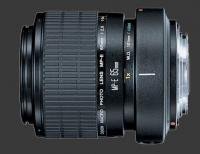
Canon MP-E 65mm F/2.8 1-5X Macro manages an incredible 5X magnification. It therefore enlarges subjects 5X more and can capture an area 25X smaller than any other macro lens.
This truly unique lens offers an equivalent 65mm focal-length on a full-frame camera at 1X magnification. It can then zoom in 5X more to cover a minimal area. Technically, it is not zooming but the effect is visually similar. The catch is that focus and magnification are linked with the MP-E 65mm and it can therefore only capture miniscule subjects, unlike typical macro lenses which can also be used for portraits and reproductions of larger objects.
This extreme magnification is incredibly difficult to achieve by other means. The common solution to extend magnification is to use extension tubes but very long ones are needed to increase magnification five-fold which results in an effective aperture which is 5X smaller and therefore 25X dimmer. Comparatively, the Canon MP-E 65mm maintains a constant maximum F/2.8 aperture. The other solution is to reverse a normal but one looses electronic contacts and this only works with certain lenses and specialized adapters.
Macro photography brings up an entire world of possibilities. Static subjects are easiest since the precision required to frame and focus one such tiny subjects is time-consuming. Insects though look entirely different once seen up close and turn from nuisance to objects of wonder when photographed closely.
Razor-Thin Depth-of-Field
A shallow depth-of-field gives an etherial look to images. Depth-of-field is determined by mix of factors: aperture, sensor-size and subject-distance. To minimize depth-of-field, one has to aim for the brightest aperture on the largest sensor and frame subject from close. The stand-out lens for this is the Canon EF 85mm F/1.2L II USM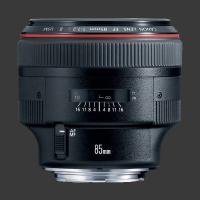
Canon EF 85mm F/1.2L II USM. This medium-lens is compatible with full-frame DSLRs.

The 85mm focal-length is ideal for portraits as it gives a flattering perspective to people. The truly bright F/1.2 maximum aperture not only provides a shallow depth-of-field but also an excellent low-light performance which is essential for capturing candid images in dim conditions.
The Canon EF 85mm F/2L USM II performs exceptionally well for such a bright lens. Images are very sharp with a slight corner softness which improves upon stopping down to F/2 or more. Some vignetting is only apparent at the widest aperture and is already negligible at F/1.4.
The Nikkor AF-S 85mm F/1.4G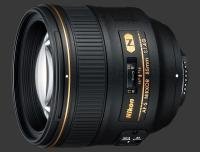
Nikkor AF-S 85mm F/1.4G offers the same focal-length and a slightly smaller maximum aperture of F/1.4. Performance of this 85mm is great with good sharpness throughout the frame from F/2.8 and smaller. Before that there is some general softness which is slightly more pronounced at corners. Vignetting is severe at the widest aperture, mind at F/2 and negligible at F/2.8 and beyond.
The most spectacular competitor to the Canon 85mm F/1.2L USM II lens is the Sony Zeiss Planar T* 85mm F/1.4 ZA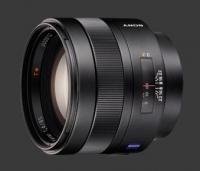
Sony Zeiss Planar T* 85mm F/1.4 ZA which provides an 85mm F/1.4 lens for the Alpha mount. The lens is exceptionally sharp corner-to-corner from wide-open. Vignetting is mild wide open but nearly disappears at F/2 and below. Distortion is inexistent on all three lenses.
Incredibly Versatile Lenses
While the lens presented so far were all chosen for offering a unique photographic outcome, the other extreme is equally interesting: lenses which offer the most versatility. Choosing a lens for its versatility is no easy task but there are two clear winners, tying for most versatile lens ever:

The Pentax DA* 16-50mm F2.8 ED AL (IF) SDM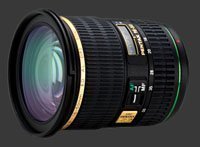
Pentax DA* 16-50mm F2.8 ED AL (IF) SDM is a pioneer of excellence and versatility. It offers an ultra-wide to medium focal-length, equivalent to 24-75mm on a full-frame camera. All the while, it maintains a rather bright F/2.8 maximum aperture throughout the zoom range and gain stabilization when mounted on any current Pentax DSLR. Add to this a premium weather-sealed construction which can stand the elements remarkably well and it becomes clear why this lens is so versatile.
The DA* 16-50mm F/2.8 handles exceptionally well. Its smooth zoom and quick-shift focus let instantly switch to manual-focus while keeping an accurate distance scale. The front lens element is coated with a special water and grease repellent formula which makes it easy to clean off rain, snow or other elements. In extreme cases, you can rinse the lens to get particles off.
Image quality of this lens is excellent and it can produce very sharp images when stopped down to F/4 or below. Corners maintain slightly more softness than a prime lens but such is the compromise for having a bright lens with an ultra-wide-to-normal zoom range. There some slight vignetting and barrel distortion at wide-angle. They both disappear once zoomed in or stopped down a little.
The Sony Alpha DT 16-50mm F/2.8 SSM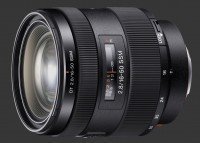
Sony Alpha DT 16-50mm F/2.8 SSM is identically specified, including a weather-sealed construction and stabilization on Sony DSLRs. We have not seen it though and so cannot comment on the quality of its images or construction.
Micro Four-Thirds cameras are getting a very impressive Zuiko M.Zuiko 12-40mm F/2.8 PRO ED
Zuiko M.Zuiko 12-40mm F/2.8 PRO ED which was launched with the Olympus OM-D E-M1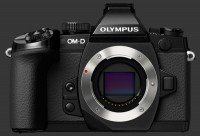
Olympus OM-D E-M1 being reviewed here. This lens offers a incredibly versatile ultra-wide to normal range, equivalent to 24-80mm on full-frame. Being made for a sensor with 2X crop, its maximum F/2.8 aperture gives something similar to an F/4 one on APS-C. Still, this one benefits from image-stabilization on all Olympus and some Panasonic cameras. It is weather-sealed too. Hence, its full potential is only achievable on the OM-D E-M1 at this time.
Full-frame cameras may be fitted with a Nikkor AF-S 24-120mm F/4G ED VR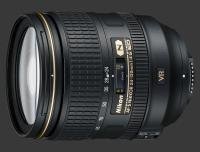
Nikkor AF-S 24-120mm F/4G ED VR or Sony Zeiss Vario-Sonnar T* 24-70mm F/2.8 ZA SSM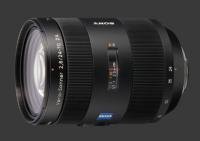
Sony Zeiss Vario-Sonnar T* 24-70mm F/2.8 ZA SSM. These lenses provide different versatility options. The former has a smaller maximum aperture but includes image-stabilization while the latter benefits from a stabilized camera body while being shorter. The Carl Zeiss is not weather-sealed, so it cannot be used in as many conditions as other ones. Despite the G-designation of the Nikkor, its performance is closer to that of a mid-range zoom with pronounced edge softness and vignetting at wide-angle which is severe and not improved when stopped down. Details are quite soft towards the telephoto end. The closest Canon full-frame equivalent is the Canon EF 24-105mm F/4L IS USM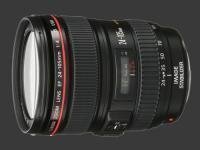
Canon EF 24-105mm F/4L IS USM which is an excellent lens overall only shorter than the Nikon and dimmer than the Carl Zeiss.
Ultra-Bright Zoom Lenses
For years Olympus remained the only manufacturer of bright zoom lenses, have a pair of complementary F/2 zoom lenses for their Four-Thirds DSLRs. The Zuiko Zuiko 14-35mm F/2 ED SWD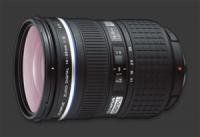
Zuiko Zuiko 14-35mm F/2 ED SWD and Zuiko Zuiko 35-100mm F/2 ED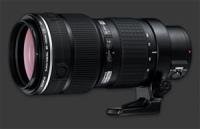
Zuiko Zuiko 35-100mm F/2 ED do still represent some of the highest performing zoom lenses on the market and they continue to be usable on Micro Four-Thirds cameras via an adapter. Olympus provides a weather-sealed one, allowing these lenses to be used on a weather-sealed camera and remain protected against the elements despite the adapter.

Sigma however recently launched their bright zoom, leading with a maximum aperture of F/1.8. This short wide-angle to normal lens offers a smaller 2X range to stay very bright. Sigma makes these for the usual 5 mounts, making it usable on any current DSLR.
These zoom lenses offer bright apertures which are otherwise reserved for primes while providing much more framing flexibility or potential resolution loss due to cropping. On Pentax and Sony cameras, the Sigma benefits from image-stabilization, making it a prime choice for working in low-light. Remember that even when one shoots at a smaller aperture, focusing and framing is done with the aperture fully open.
People using Four-Thirds or Micro Four-Thirds cameras should serious consider the Zuiko 14-35mm F/2 zoom for its impressive performance. Users of APS-C cameras will be very impressed by the Sigma 18-35mm F/1.8. Both these lenses are made for DSLRs but adaptable to mirrorless cameras. The only downside is bulk with a Zuiko weighing 900g and a Sigma 810g. The 35-100mm F/2 though has no equivalent and weighs in at 1.6kg.
Conclusion
Lenses are often a personal choice. They complement your vision and offer the opportunity to extend it. Trying on a new lens can be exhilarating as it reveals new ways to see familiar scenes and make the photographer discover new photographs.
The lenses presented here are the cream-of-the-crop, class-leaders offering unique oportunities. Most are only available natively for a single system but several can be adapted, particularly to be used on mirrorless cameras which have a short flange distance compared to DSLRs. Here are these lenses again, in order of appearance:
- Ultra-Wide Choice: Nikkor AF-S 14-24mm F/2.8G IF-ED
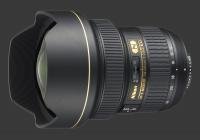
Nikkor AF-S 14-24mm F/2.8G IF-ED for Nikon F-mount. Close (tied) seconds: Panasonic Lumix G Vario 7-14mm F/4 ASPH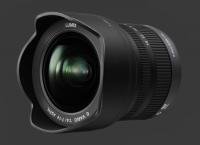
Panasonic Lumix G Vario 7-14mm F/4 ASPH for Micro Four-Thirds and Zuiko Zuiko 7-14mm F/4 ED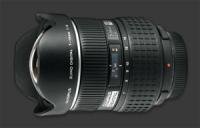
Zuiko Zuiko 7-14mm F/4 ED for Four-Thirds. - Perspective-Control: Canon TS-E 17mm F/4L
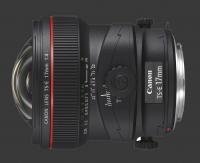
Canon TS-E 17mm F/4L for Canon EF-mount. - Choice fisheye: Pentax DA 10-17mm F3.5-4.5 ED (IF) Fish-Eye
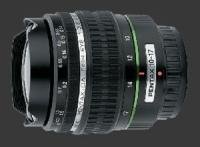
Pentax DA 10-17mm F3.5-4.5 ED (IF) Fish-Eye for Pentax K-mount. Tokina version for Nikon F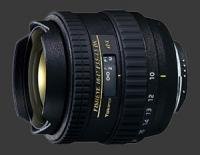
Tokina AT-X 107 AF DX Fish-Eye and Canon EF
Tokina AT-X 107 AF DX Fish-Eye mounts. Alternative for Canon EF-mount: Canon EF 8-15mm F/4L Fisheye USM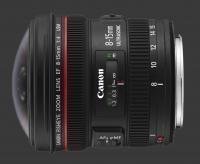
Canon EF 8-15mm F/4L Fisheye USM. - Extreme macro: Canon MP-E 65mm F/2.8 1-5X Macro

Canon MP-E 65mm F/2.8 1-5X Macro for Canon EF-mount. - Depth-of-field: Canon EF 85mm F/1.2L II USM

Canon EF 85mm F/1.2L II USM for Canon EF-mount. Close second and third, respectively: Sony Zeiss Planar T* 85mm F/1.4 ZA
Sony Zeiss Planar T* 85mm F/1.4 ZA for A-mount and Nikkor AF-S 85mm F/1.4G
Nikkor AF-S 85mm F/1.4G for F-mount. - Maximum versatility: Pentax DA* 16-50mm F2.8 ED AL (IF) SDM

Pentax DA* 16-50mm F2.8 ED AL (IF) SDM for Pentax K-mount. Close: Sony Alpha DT 16-50mm F/2.8 SSM
Sony Alpha DT 16-50mm F/2.8 SSM for A-mount and Zuiko M.Zuiko 12-40mm F/2.8 PRO ED
Zuiko M.Zuiko 12-40mm F/2.8 PRO ED for Micro Four-Thirds. - Ultra-Bright zooms: Zuiko Zuiko 14-35mm F/2 ED SWD

Zuiko Zuiko 14-35mm F/2 ED SWD and Zuiko Zuiko 35-100mm F/2 ED
Zuiko Zuiko 35-100mm F/2 ED, both for Micro Four-Thirds. Sigma A 18-35mm F/1.8 DC HSM for A, EF, F, K and S mounts.
Honorable mentions go to: Canon EF 24-105mm F/4L IS USM
Canon EF 24-105mm F/4L IS USM, Nikkor AF-S 24-120mm F/4G ED VR
Nikkor AF-S 24-120mm F/4G ED VR and Sony Zeiss Vario-Sonnar T* 24-70mm F/2.8 ZA SSM
Sony Zeiss Vario-Sonnar T* 24-70mm F/2.8 ZA SSM for versatility. Kudos to Sigma 8-16mm APS-C and 12-24mm Full-Frame for extreme wide-angle coverage and to Panasonic for their 3D Lens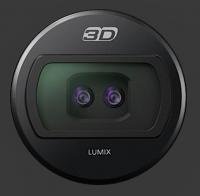
Panasonic Lumix G 12.5mm F/12.
Note that the list above is not exhaustive and there certainly are great lenses which exceed in other areas. Also, performance of a lens varies between digital cameras. One that appears sharp on a camera, may not be so on another. Other than the Pentax DA* 16-50mm F/2.8 for which we had 3 and the Nikkor AF-S 24-120mm F/4G for which we had 2, evaluations are based on a single lens sample.
Please Support Neocamera
All information on Neocamera is provided free of charge yet running this website is a huge endeavor. Purchases made via affiliate links found throughout the site help keep it running and up-to-date. There is no additional cost to you, so please consider buying via these links to our affilates:
If you found any information on this site valuable and did not purchase via our affiliate links, please considering donating via PayPal:
Any amount will be greatly appreaciated. Thank you for your support!
3D Lens
For a completely different perspective, Panasonic offers a 3D lens for Micro Four-Thirds digital cameras. This lens is actually a pair of 12.5mm F/12 fixed aperture lenses mounted together in a pancake-style lens-barrel.
The Panasonic Lumix G 12.5mm F/12
Panasonic Lumix G 12.5mm F/12 is unique on the market and the short flange-distance it requires, by definition, makes it difficult to adapt to other mounts. It also requires collaboration from the camera in order to work properly.

Unlike a 3D camera which has two lenses and two sensors, Panasonic's 3D lens projects both left and right images onto a single sensor. This produces an unusual file composed of two low-resolution images side-by-side. Special software to blend both these into a single MPO file is needed before viewing on a 3D display.
While the focal-lengh is specified as 12.5mm which would be equivalent to 25mm, the field-of-view of the resulting 3D image is roughly equivalent to that of a 68mm lens.
Updates
2025.01.18

Fujifilm GFX 2025 Lens Roundup
Lens Review roundup of Fujifilm GFX Medium-Format lenses. Quality, performance and handling of the GF20-35mm F/4R WR, GF30mm F/3.5 Tilt-Shift and the GF55mm F/1.7.
2024.11.18

Best 2024 Photography Gifts for Every Budget
Great gifts for photographers and photo enthusiasts selected for every budget among the best products of 2024.
2024.08.07

Eye Protection Tips for Professional Photographers
The four main considerations for professional photographers regarding eyewear.
2024.07.14

Fujifilm X100VI Review
Flagship fixed-lens compact digital camera with a 40 MP sensor and Image-Stabilization, a first for the series. Retro design featuring dual control-dials, plus direct ISO, Shutter-Speed and EC dials. Its hybrid viewfinder can switch between EVF and OVF mode.
2024.05.09

Fujifilm GFX100 II Review
Flagship 102 Megapixels Medium-Format Mirrorless Digital Camera with 8-Stop 5-Axis IBIS, 8 FPS Drive, 8K Video and 400 MP Super-Resolution capture in a weatherproof and freezeproof body with dual control-dials and dual memory-card slots.
2024.04.03

Fujifilm X-T5 Review
Newest Fujifilm flagship boasting a 40 MP APS-C sensor, 5-axis IBIS with 7-stop efficiency, 15 FPS continuous drive, 6.2K Video capture, dual control-dials and dual SDXC UHS-II slots in a sturdy weatherproof and freezeproof body.
2023.11.20

Best Digital Cameras of 2023
Find out which are the Best Digital Cameras of 2023. All the new Mirrorless Digital Cameras from entry-level to high-end professional.
2023.07.10

Fujifilm X-H2 Review
40 Megapixels APS-C Hybrid Mirrorless Digital Camera with 7-stop IBIS. Fastest shutter ever and 8K video capture. Large builtin EVF with 0.8X magnification and 5.8 MP, plus an Eye-Start Sensor. Packed with features and large number of controls in a weatherproof and freezeproof body.
2023.05.07

Sony FE 20-70mm F/4G Review
Review of the unique Sony FE 20-70mm F/4G lens. The optical zoom of this lens spans ultra-wide-angle and medium focal-length coverage, making it one of the most versatile Full-Frame lenses on the market.
2023.01.15

Huion Inspiroy Dial 2 Review
Review of the Huion Inspiroy Dial 2 tablet, a medium sized drawing surface with dual dials and customizable buttons. Connects via USB-C or Bluetooth 5.0 with Windows, Linux and Android support.
2022.12.08

How to Pack for a Photo Trip
Find out how to pack for a travel photography trip, carry your gear safely while meeting airline regulations.
2022.11.13

Best Digital Cameras of 2022
The best digital cameras of 2022. A short list of the most outstanding models in their respective categories. Choose one for yourself or as a gift.
2025.01.18
2024.11.18
2024.08.07
2024.07.14
2024.05.09
2024.04.03
2023.11.20
2023.07.10
2023.05.07
2023.01.15
2022.12.08
2022.11.13
NEWS
2025.03.26

Canon Launches Pair of Cameras and Lenses
Digital Camera ○ Lens
2025.03.25

Venus Optics Launches Vista Vision Cine Lenses
Lens
2025.03.24

Think Tank Photo Walker Pro
Bag
2025.03.20

Fujifilm First Fixed Lens Medium-Format Camera
Digital Camera
2025.02.26

Sony Launches Two New Lenses at CP+2025
Lens
2025.02.25

CP+2025 Showcases Numerous Launches
Digital Camera ○ Lens
2025.02.13

Nikon Launches 5X Full-Frame Power-Zoom Lens
Lens
2025.02.05

Nikon Refreshes Flagship Ultra-Zoom
Digital Camera
2025.02.05

Nikon Launches Ultra-Bright 35mm F/1.2 Prime Lens
Lens
2025.01.21

Fujifilm Evolves INSTAX Wide
Digital Camera
2025.01.16

Leica Launches SL3-S
Digital Camera
2025.01.14

Think Tank Photo Launches Dark Light Tactical Backpacks
Bag








